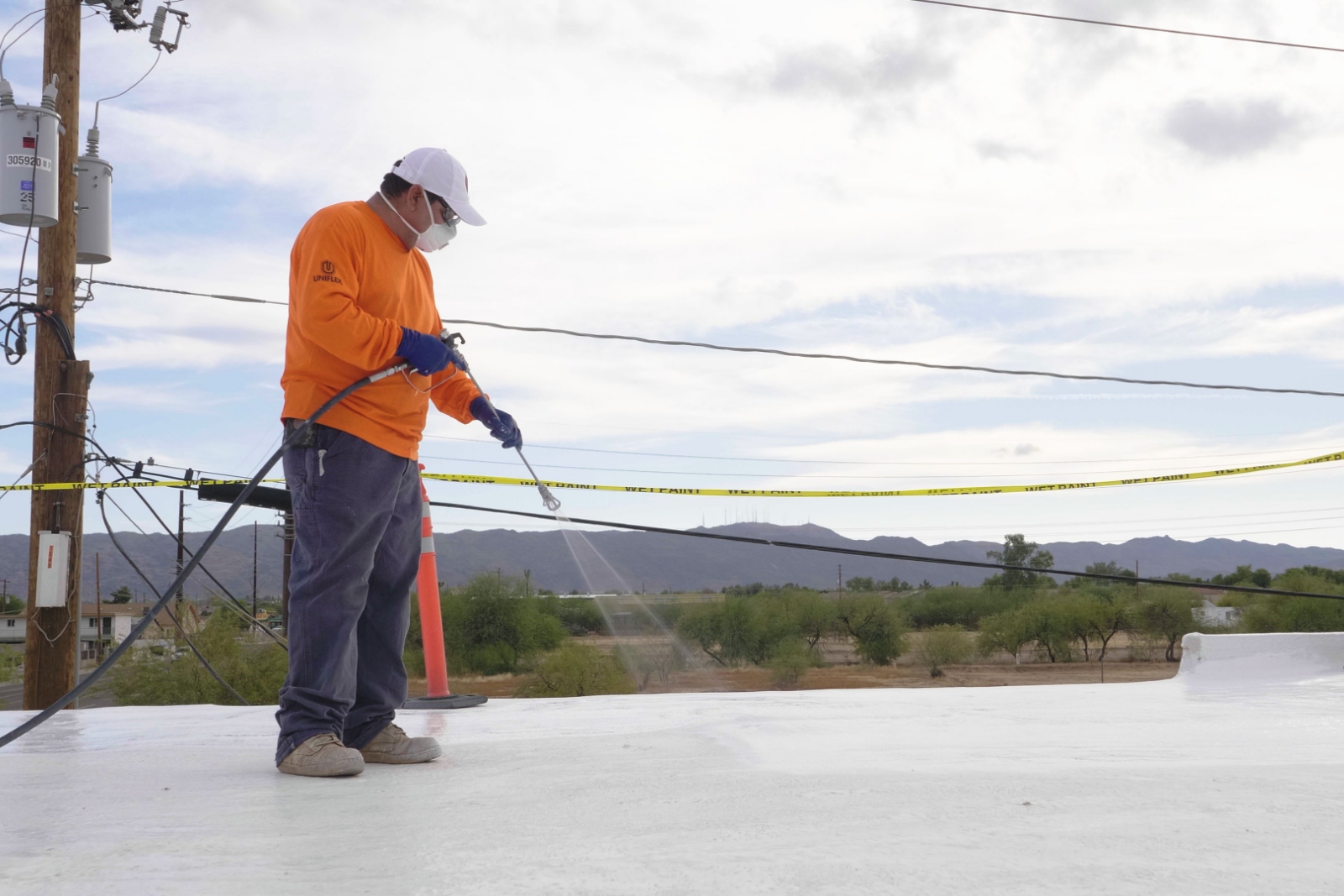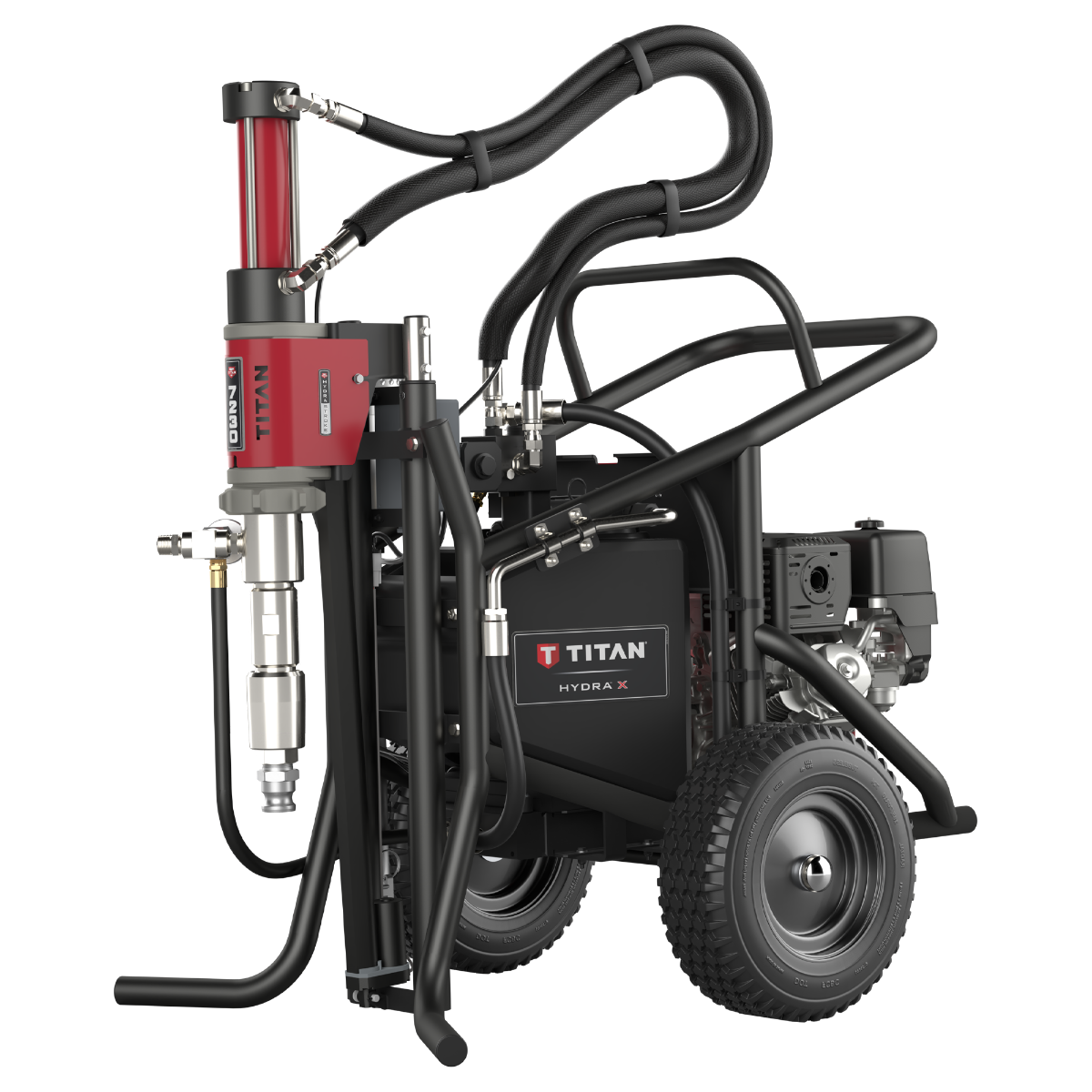
Roof coatings play a critical role in the effectiveness, efficiency, and reliability of a roofing system, and most can be easily applied without the need for a large crew or heavy-duty equipment. But knowing which roof coating is right for your roofing system can be a somewhat overwhelming task for many contractors. There are several primary options out there, each with its own pros, cons, and ideal applications.
Here is a closer look at the benefits of roof coating, how roof coatings differ from paint, and how four of the most common types of roof coatings vary from one another.
Benefits of Roof Coating
For building owners and facilities managers, deciding to apply a roof coating can be one of the best steps toward prolonging the life and performance of a roofing system. High-quality roof coatings help protect properties against the elements over long periods of time and are especially essential for manufacturing and processing facilities where the environment must be controlled without worrying about chemicals damaging the roof.
From a financial standpoint, applying a roof coating also has its advantages. It costs about 50-60% less than undergoing a full roof replacement, and doing so is 100% tax deductible due to it being considered routine maintenance. A building permit is in most cases not needed to apply a roof coating, and with the right equipment it can often be completed as a one-man job.
Roof Coatings vs. Paint
Roof coatings and paint are often thought of in a similar sense, but the two are quite different in terms of their material makeup and their intended purpose.
First off, coatings have a higher solids content than paint and are formulated with high-quality resins that allow them to maintain their elasticity even as roofs expand and contract over time.
Coatings are also much more effective at protecting roofs from damaging elements like wind, rain, and UV exposure – but some are better at this than others. To dig a bit deeper, let’s take a look at four of the most common types of roof coatings and their unique characteristics.
Elastomeric Acrylic Coatings
Known for their durability and affordability, elastomeric acrylic coatings are an eco-friendly option that can be applied to a number of new or existing roof types – as long as the surface is properly prepared.
Acrylic coatings are available in a variety of highly reflective white colors, offering excellent UV protection with the potential to also lower the surface temperature of the roofing system.
On the downside, it is important to note that these are water-based coatings, which means they can become brittle and delaminate from the roof when exposed to ponding for extended periods of time.
Silicone Coatings
Where acrylic coatings can sometimes struggle in wetter or more varied climates, silicone coatings excel, offering the most protection against moisture, humidity, and fluctuating temperatures. Silicone coatings typically do not contain a warranty exclusion for roof areas that pond water, and thus are a popular choice in wetter climates.
Silicone coatings are available in both high-solid and low-solid formulas, with the former often able to be applied in a single coat, offering the additional benefit of quicker installation.
Fluoropolymer Coatings
Fluoropolymer coatings are another great option for those in need of weather resistance, offering a high level of reflectivity that comes with added protection against the elements and organic growths.
These coatings are highly flexible with a tough, enamel-like finish that can resist dirt pickup. Fluoropolymer coatings also provide excellent UV protection and color stability for roofing systems.
Urethane or Polyurethane Coatings
For applications in need of a tougher finish, urethane or polyurethane coatings are often a smart choice, delivering a unique combination of tensile strength, elongation, and hardness.
These coatings help resist abrasion while protecting against chemicals, mildew, and dirt pickup. They’re flexible, as well, which means they can resist temperature fluctuations better than acrylic coatings.
Which Roof Coating is Right for Me?
Determining which roof coating is best for your project or property all comes down to understanding the advantages and disadvantages of each and how they’ll pair with the goals and needs of your roofing system.
Key considerations to keep in mind include:
- The functional and aesthetic needs of your property
- The purpose of your property (i.e., manufacturing, education, retail, etc.)
- The condition of your current roofing system
- The climate in which your property is located
- The slope of the roof
Unleash Maximum Durability and Power with the Hydra X Series
Built for unmatched toughness and performance in both commercial and residential settings, the Titan Hydra X Series delivers when the job calls for the highest-quality roof coatings.
Here are just a few reasons the Hydra X Series has become known as the industry’s best roofing and protective coating sprayers:
- Quick-removal fluid section enables easy, single-operator service on the jobsite
- Versatility to spray heavy and light-bodied coatings
- Extremely efficient cooling system includes two fans to maximize air flow
- Effortlessly change drums with the electric AutoLift™ System
- And more
Learn more about the Hydra X Series sprayers here and contact us today to start experiencing better results on your next roof coating job.


